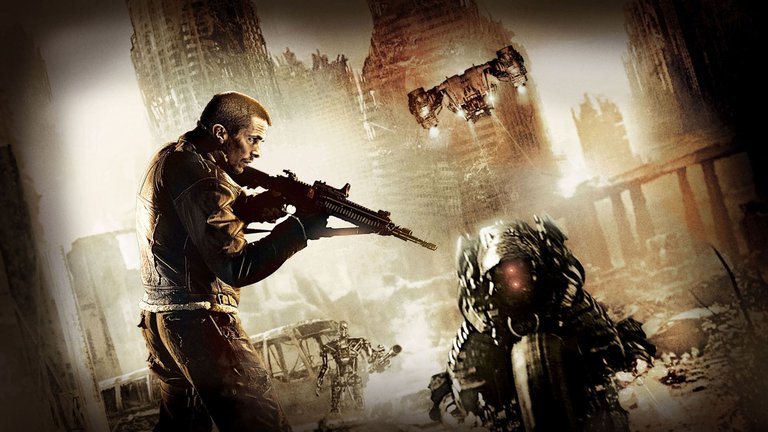Film Review: Terminator Salvation (2009)

Of all the Hollywood film series in the 21st century, few have become as emblematic of continuous failure as the Terminator franchise. With the notable exception of the short-lived television series Sarah Connor Chronicles, every attempt at sequels, reboots, reimaginings, or even homages has failed to meet the high standards set by James Cameron's iconic 1984 film and its groundbreaking 1991 sequel. Instead, these efforts have left both original fans and general audiences frustrated due to a lack of imagination, blatant disregard for continuity, and questionable creative choices. One of the most telling examples of this trend is Terminator Salvation, the fourth instalment in the series, which was intended to rejuvenate the franchise in a manner akin to how Casino Royale revitalised the James Bond saga. However, instead of achieving this goal, Terminator Salvation is primarily remembered for its lead actor’s widely publicised meltdown on set.
The scriptwriters John Brancato and Michael Ferris deserve credit for attempting to deviate from the basic plot formula that characterised the previous three films—namely, a character from the future travelling back in time to save someone’s life. In Terminator Salvation, they flipped this concept on its head by introducing a narrative where a character from the past awakens in a dystopian future. The plot begins in 2003 with Marcus Wright (played by Sam Worthington), a convicted murderer on death row who agrees to donate his body to Cyberdyne Systems for cancer research following his execution. He unexpectedly awakens in 2018, bewildered not only by his survival but also by the devastation wrought upon the world by nuclear war—a conflict instigated by Skynet, an artificial intelligence that has become self-aware. In the ruins of Los Angeles, Marcus encounters survivors, including a young Kyle Reese (played by Anton Yelchin). The remnants of humanity are being hunted by Skynet’s relentless killer robots known as "Terminators." However, resistance fighters have begun to mount a counter-offensive, led by the charismatic John Connor (played by Christian Bale). Upon discovering that Skynet has marked both him and Kyle Reese for termination, Connor resolves to launch an audacious strike against Skynet's headquarters in San Francisco. He receives unexpected assistance from Marcus, whose true identity and motivations he continues to be suspicious of.
While Terminator Salvation is often considered superior to its predecessor Terminator 3: Rise of the Machines, such an assessment is hardly commendable given the latter's poor quality. Producers took a risk by sidelining time travel—only referenced as background lore regarding John Connor’s prophetic status—and instead set the entire story within a bleak post-apocalyptic future, a setting only been briefly glimpsed in tantalising flashbacks during first two earlier films. This provided an opportunity for the film to explore a darker world and present somewhat plausible survival strategies employed by its inhabitants.
This new direction also allowed director McG—best known for his work on music videos and light-hearted action comedies like Charlie’s Angels—to showcase how a substantial budget of $200 million could be effectively utilised to produce spectacular action sequences. The special effects are notably impressive, merging cutting-edge CGI with traditional mechanical effects. The late Stan Winston, celebrated for his mastery in special effects, received posthumous credit for his contributions during production.
However, despite their intentions to innovate, the scriptwriters made significant missteps that detracted from the film's overall impact. The character of Marcus Wright ultimately appears redundant; his significance is undermined by a "clever" plot twist that was infamously spoiled in trailers prior to release. Additionally, while Sam Worthington, star of Avatar, was personally recommended for this role by James Cameron himself, his performance lacks depth compared to Christian Bale's more intense portrayal of John Connor.
The film's most critical flaw lies in its climactic twist involving Skynet’s ultimate plan against Connor, which comes across as implausibly foolish. While viewers familiar with contemporary AI may not find this detail entirely unbelievable, many audiences in 2009 viewed this aspect as indicative of lazy writing—rendering Terminator Salvation indistinguishable from other poorly conceived science fiction films released around that time.
Moreover, Shane Hurlbut's desaturated cinematography contributes to an overwhelming sense of monotony throughout the film. The bleak visual palette intended to underscore the desolation of a post-apocalyptic world renders it visually indistinct from other films with similar themes, such as The Book of Eli. This stylistic choice further reinforces an impression of "been there, done that”.
Despite achieving moderate box office success, Terminator Salvation failed to rescue The Halcyon Company studio from bankruptcy. Initial plans for a trilogy set within this post-apocalyptic future were ultimately abandoned due to financial constraints. Subsequently, the Terminator saga continued with two new reboots—Terminator: Genisys (2015) and Terminator: Dark Fate (2019)—both of which failed.to win the heart and minds of increasingly frustrated fans of the franchise.
RATING: 4/10 (+)
Blog in Croatian https://draxblog.com
Blog in English https://draxreview.wordpress.com/
InLeo blog https://inleo.io/@drax.leo
Hiveonboard: https://hiveonboard.com?ref=drax
Rising Star game: https://www.risingstargame.com?referrer=drax
1Inch: https://1inch.exchange/#/r/0x83823d8CCB74F828148258BB4457642124b1328e
BTC donations: 1EWxiMiP6iiG9rger3NuUSd6HByaxQWafG
ETH donations: 0xB305F144323b99e6f8b1d66f5D7DE78B498C32A7
BCH donations: qpvxw0jax79lhmvlgcldkzpqanf03r9cjv8y6gtmk9
Posted Using InLeo Alpha